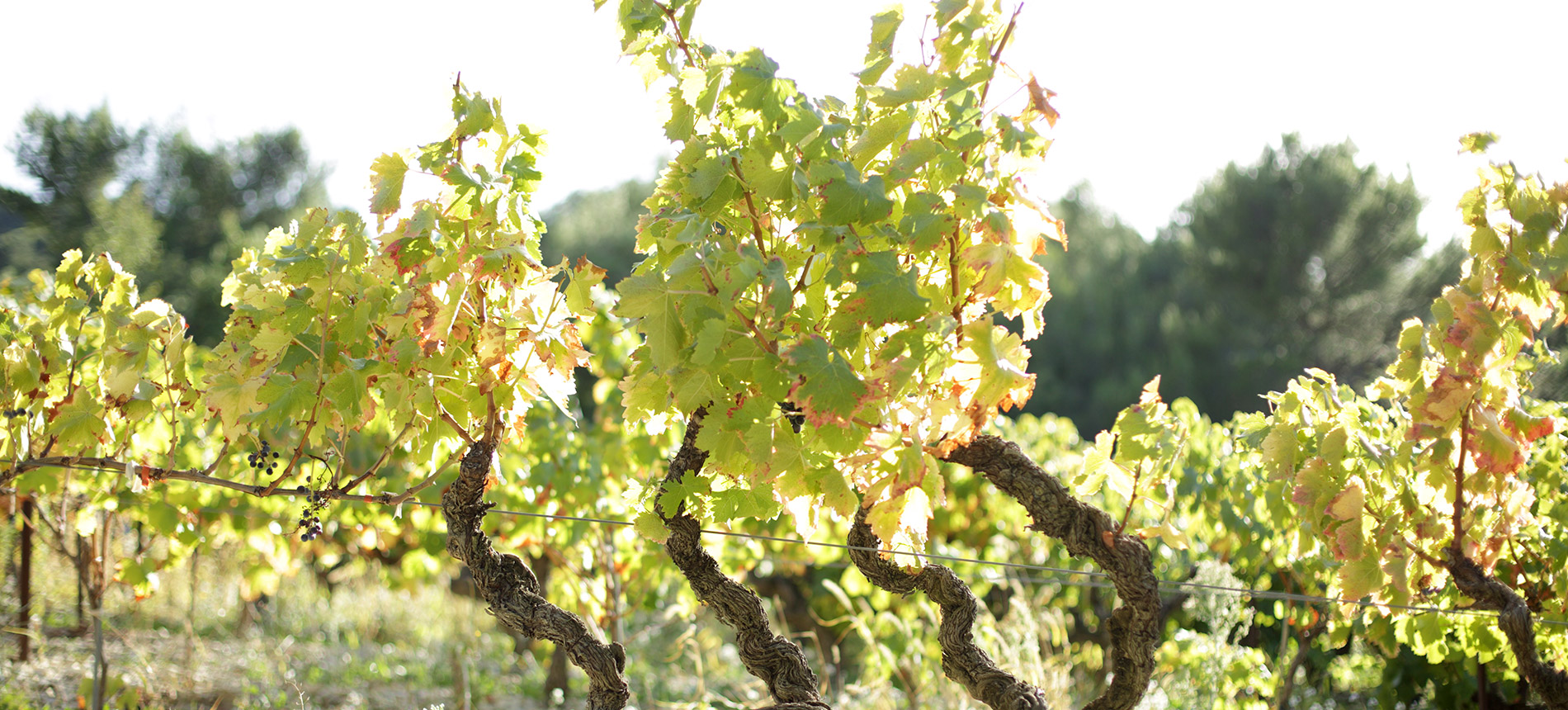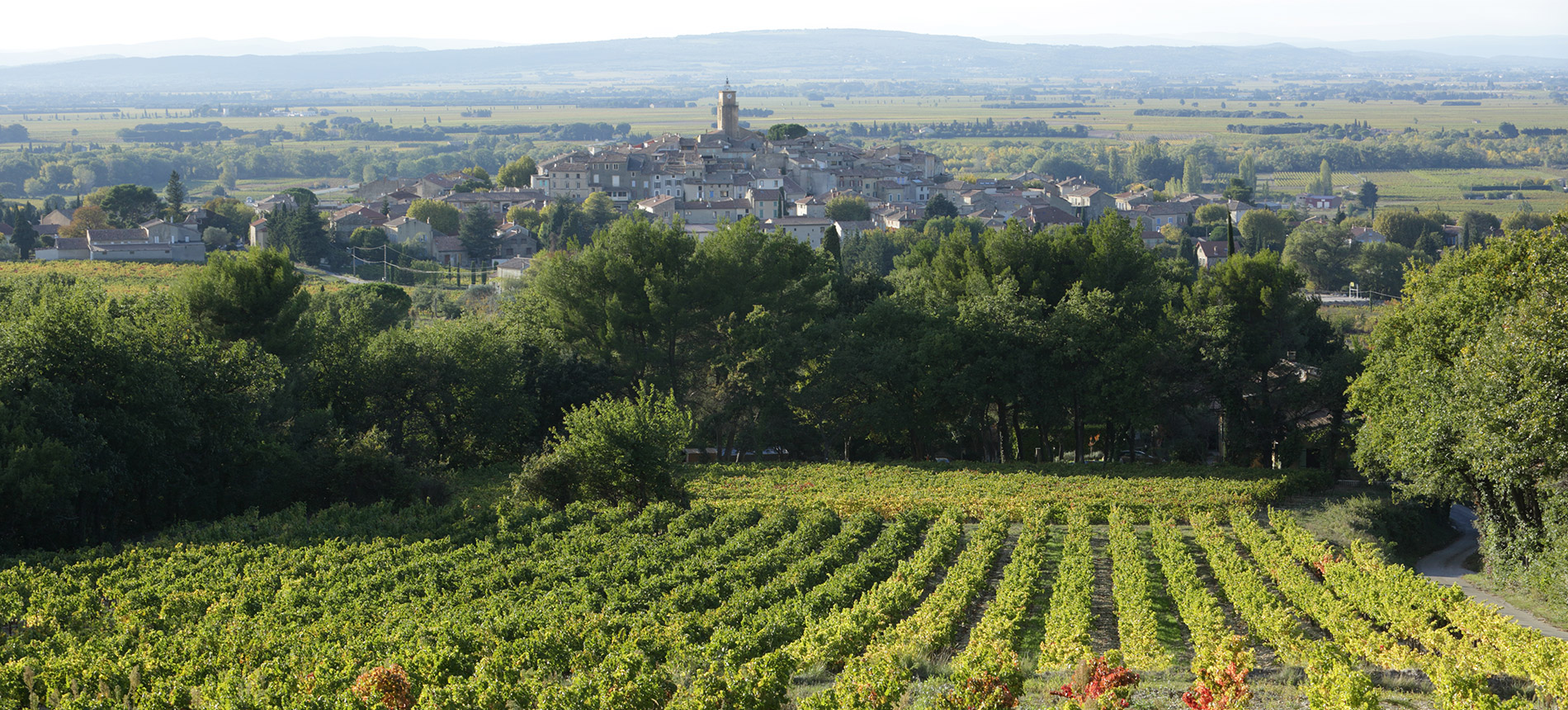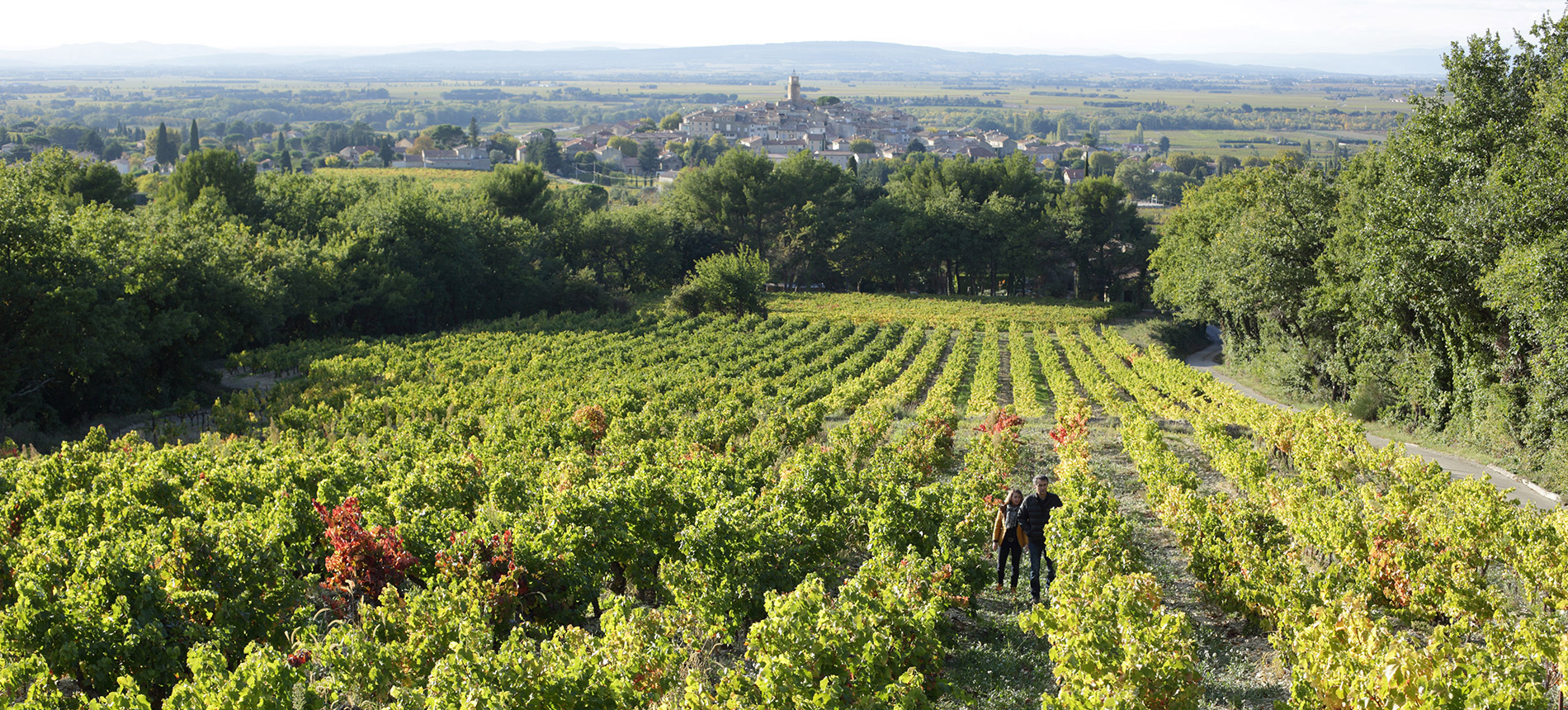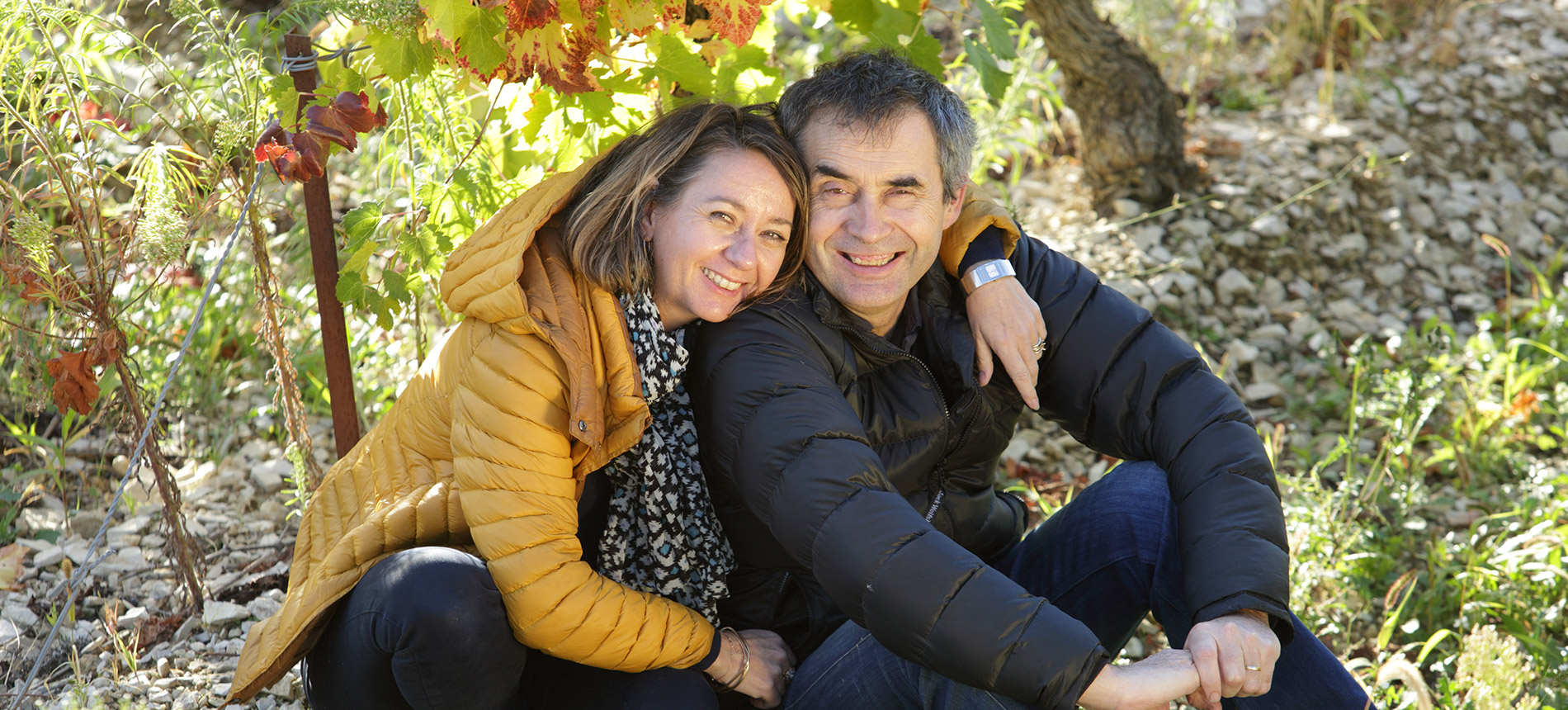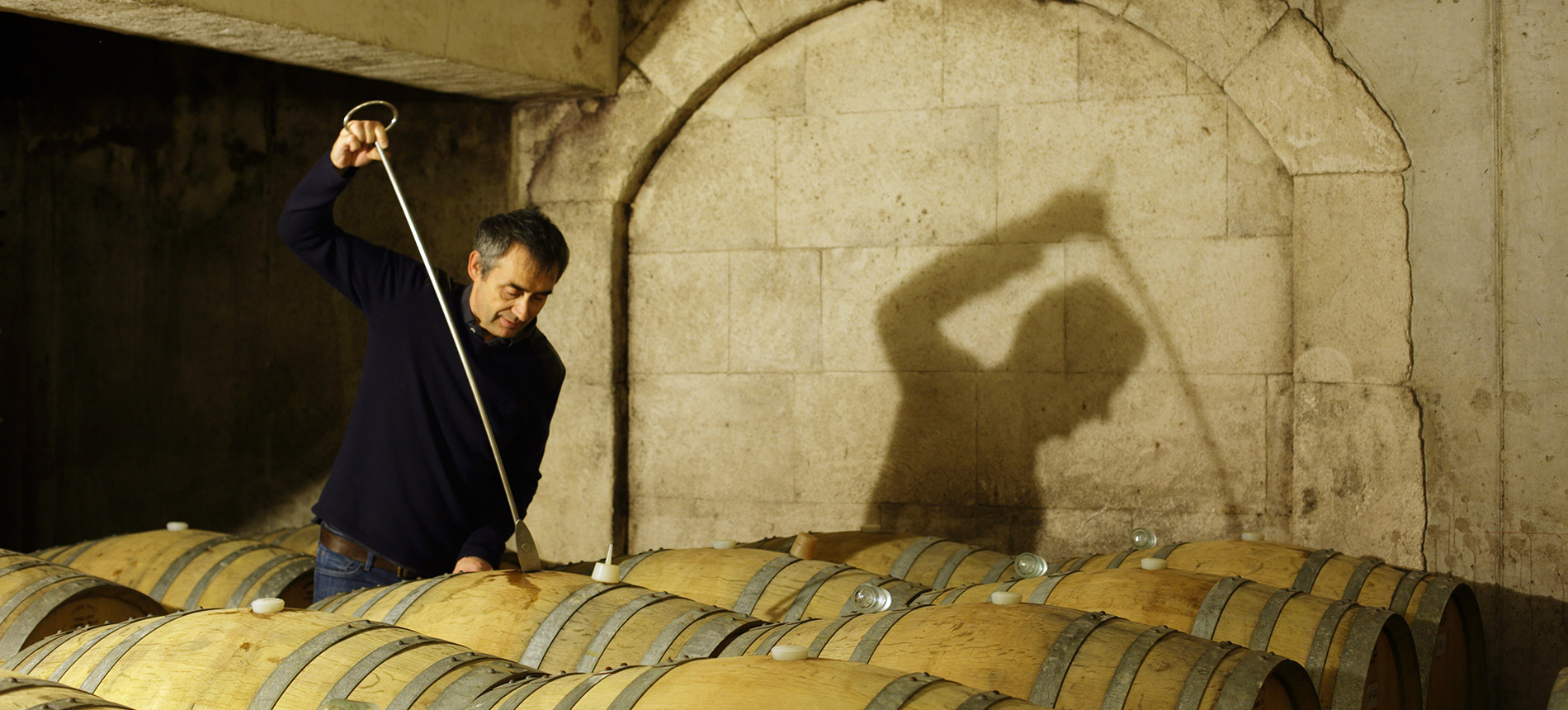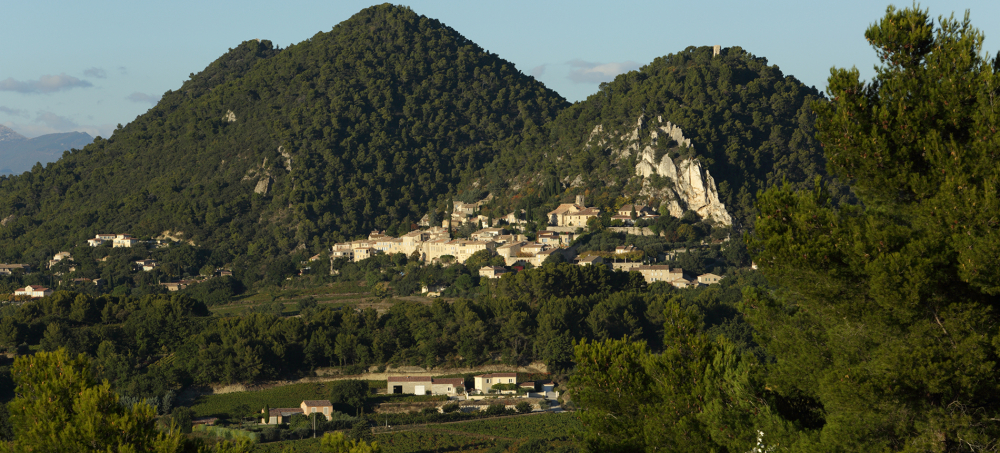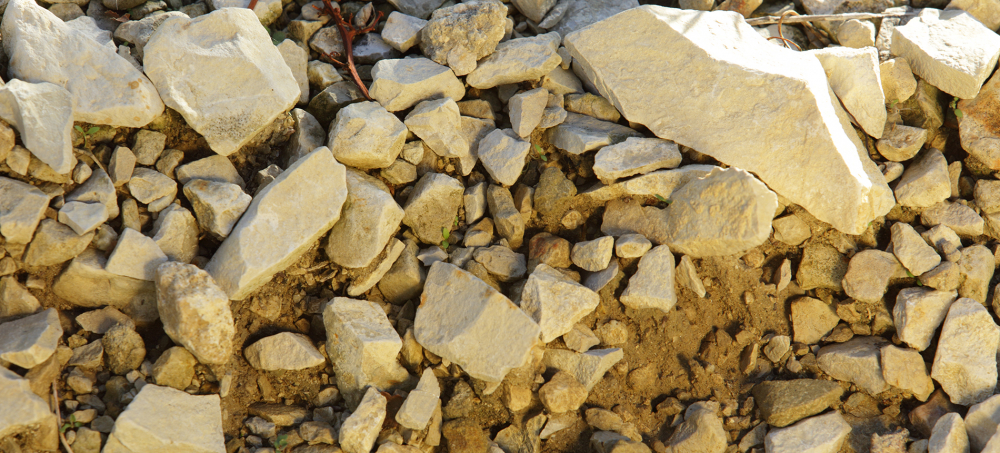Our friends Jim and Bob Varner introduced us to Sophie & Jean-Marc Autran of Domaine de Piaugier. Their historic family encompasses 30 hectares located mostly in Sablet (Côtes-du-Rhône Villages), as well as in the surrounding Côtes-du Rhone-area.
Alphonse Vautour, Jean-Marc Autran’s great grandfather, made his wine in a cellar at the top of a little hill to the south of Sablet – called ‘Les Briguières’ – where he owned 6 hectares of vines. The winery was named ‘Ténébi’, after the old owner of the house. In order to sell his wines, Alphonse had to go down the hill, his mules loaded with barrels, to wait for the wine merchant to come by. If the merchant didn’t come, or didn’t buy his wine, he had to climb back up with his reluctant mules. So in 1947, he decided to build a new winery on the road below, where the Piaugier cellars are to this day.
Fourth generation Jean-Marc Autran took over the winery from his father Marc in 1985. He acquired more vineyards and, with the assistance of his wife Sophie, developed the sale of his wines in bottle. The winery soon became too small so they expanded the footprint in 1995, which enabled them to mature and store the wines in the best possible conditions. Today, Sophie and Jean-Marc Autran, along with their daughter Maude, farnm 3.5 hectares within the Gigondas AOC, 12.5 hectares in the Sablet AOC, and 14 hectares of Côtes-du-Rhône vineyards. " Rigor, respect, and patience" is the Piagier mantra in the vineyards and cellar. After years of farming organically, Domaine de Piaugier earned certification through ECOCERT.
One of the great advantages of the domaine is that it is split into many small areas located on different soil types: clay with limestone and sand, clay with chalk, and sand and gravel soils. The village name of Sablet actually refers to "sable", which means "sand" in French. A further advantage is that the vines themselves, which are 35 – 60 years old, are reaching their prime. Vines are planted at 4,000 plants per hectare and close attention is paid to yields with an average of 40 hl/ha, well below the standard in the region. The grapes are hand-harvested, parcel by parcel, which lends each wine its own specific character, each one different from the next.
Grenache reigns supreme in the village, with complimentary plantings of Syrah, Mourvèdre, Counoise and Carignan. While Grenache can sometimes overpower other varieties, Jean-Marc's gentle touch and gift with blending translate to a more elegant, restrained style. Fruit and freshness are the always the aim, even in warmer years. Until the 2005 vintage, the wines were made from whole bunches, with no destemming or crushing. Destemming was introduced in 2006. The duration of indigenous yeast fermentation varies from one week (Côtes-du-Rhône) to four weeks (for the Sablet and Gigondas). The temperature is strictly controlled at 28-30°C. The Côtes-du-Rhône red wines are matured in concrete tanks for 6-12 months while the Sablet and Gigondas are matured for 2 years in used barrique as well as concrete tank. When bottling the reds, only their Côtes-du-Rhône is filtered.
With Maude Autran firmly in place alongside her parents, it is clear that the next generation will uphold the Piaugier tradition of ethically farmed and passionately produced Southern Rhône wines that are vibrant, elegant, and among the region's greatest values.
